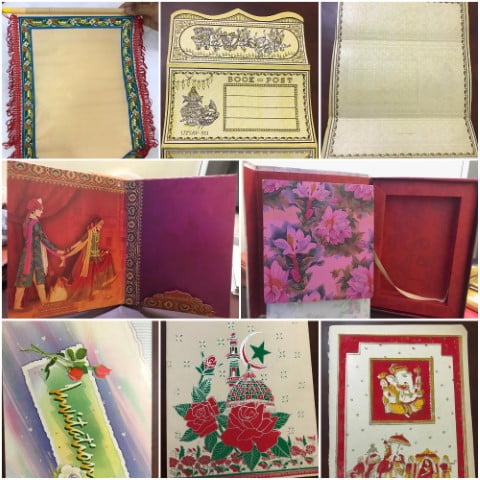From Palm Leaf To Digital, Indian Wedding Cards Have Evolved And How!

Bhubaneswar: The ubiquitous wedding card has been an intrinsic part of Indian weddings from as far back as one can remember. From inscriptions on palm leaves to ordinary paper and glossy paper and now digital cards, they have become as big as our weddings. They are no longer ordinary. Some are simple yet in sync with the times, others are loud and tacky, some are understated and classy, some are sassy and some exude class and wealth. In other words, they are all unique and out of the box. A wedding card indicates the taste of the couple getting married and also their families.
Selecting the design of a wedding card has always been a huge project. In fact families get into the celebration mode only after wedding cards have been printed and their distribution begins.
Over the years, the design and format of these invitation cards has changed and the budget for them has swelled. Wealthy families are known to spend lakhs only on weddings cards. With a plethora of wedding card designs and designers, it has become an industry in itself.
In the recent past, creatively designed e-wedding cards have also become a norm because with time at a premium, no one has the bandwith to distribute cards by hand to all the relatives and friends.
“In our time, weddings cards were cut out in the shape of a banana leaf with the content written on the back side. Conch-shaped cards were also in vogue. Open the conch and you can read the whole programme. The cards were printed in press at that time,” said writer and educationist, Adhyapak Biswaranjan.

“There was a time when cards were inscripted on palm leaves. They were designed with the symbols of marriage and with shlokas, images of Radha and Krishna etc,” said Biswaranjan.
With advancement in technology, different varieties of cards are available in the market. Though the same content and Sanskrit shlokas with images of Radha and Krishna and ujaimala (exchange of garlands) are used, the designs have changed.

“I established my card shop in the Odisha capital in 1985. We used to print normal cards using ivory paper at that time. The highest range of a card was Rs 3 per piece 30 years back. Even then, most of the people used to prefer cards that cost Rs 1 per piece. In the early 1980s, people started going to Kolkata to bring cards because we did not have many facilities here,” said owner of city-based Gunjan Card shop, Mangtulal Agrawal.

“Look at the time now. People are willing to shell out Rs 200 to Rs 250 on a single card. They also want sweet box cards, in which case the price goes up to Rs 500 per piece. We had press printing at that, which was costly. So we could not experiment much. Now, since we have screen printing, we can make a variety of designs. I have cards in the range of Rs 2 to Rs 250 per piece. Cards in the range of Rs 10 and Rs 15 are still in demand,”he added.
Besides, cards with photos of the bride and groom printed on them are also much in demand, said Agrawal.

“The price of the cards varies depending on the material, design and format. With different kinds of paper, cardboard and different fabrics used in cards nowadays, the price varies a lot. Invitation cards for all religions are available in the shop,” said Agrawal.

Digital Wedding Card
“It is not possible to give a card personally to all the guests in this busy and fast paced life. So, digital wedding cards are also in demand now. People are sending digital cards on Whatsapp or Facebook,” said Bhaktahari Das, a photographer.
“The average duration of a digital wedding card is 40 sec to 1 min, which includes our wedding photo shoot package. With visuals of both the bride and the groom, we add information of both the families, venue and date in the digital cards,” he added.

Comments are closed.